– By #Pioneer Auto Show
Imagine you find yourself in a conversation with a stranger over a 1965 Mustang Fastback. You may not be a car aficionado, but this person is. You’re both talking about how the vehicle is a beauty. You say something like “what a gorgeous classic car.” Then you get a sinking feeling as the person looks at you before saying “Um… actually…” You may have just committed a faux pas, at least in that person’s eyes. So how can we accurately describe and classify cars? Well, it depends on who you ask.
What is “Classic”?
Let’s face it, all classic cars are great. However, the term “classic” is loosely defined and generally used as an all-encompassing definition. The Classic Car Club of America (CCCA) defines a classic car as “fine or distinctive automobile, American or foreign built, produced between 1915 and 1948”. Most states have different definitions of what constitutes a classic or “historic” car, for regulation and insurance purposes. South Dakota, for example, considers cars over 30 years old to be historic. But you wouldn’t call your old 1990 Geo Metro “classic” – not even close! Many more consider classic to be at least 20 years old but not more than 40 years old. To make things even more complicated, any modern modifications – such as that mp3 player you had installed in your 1978 Corvette - could have it declassified as authentic.
What is “Antique”?
Now, what comes to mind when you hear the words “antique car”? You may think of a car from the era of the 1930’s – 1940’s, like you have seen in movies and TV. According to the Antique Automobiles Club of America (AACA), an antique car is defined as a vehicle intended for transportation that is at least 50 years old or older, and has factory specifications the same as the day it was shipped from manufacturer to dealer.
What is “Vintage”?
The vintage era of cars was a period of time from 1919 – 1930, when cars became more commonplace and ubiquitous in society. Thus, most vehicles from this era are dubbed “vintage”. Typically, these vehicles are allowed to have modifications without losing their vintage status. This classification can also overlap with the general definition of antique, as long as the vehicle has not been modified.
The Bottom Line
With so many variables and groups weighing in on how to classify cars, it can be difficult to come to a unanimous decision. The dictionary defines classic as historically memorable, so when you see a car (such as the 1965 Mustang from earlier) you may automatically think of it as a classic car, although many would disagree. Based on the above specifications, a car from 1930 could be considered, classic, antique and vintage (assuming it is in its original factory state), or just vintage and antique depending on who you ask. So why muddy the waters? Unless you’re pursuing membership with an automotive club, you should feel free to use the terms you feel are appropriate.
Stop by the Pioneer Auto Show to view our huge collection of vintage, antique AND classic cars!Last Modified:




